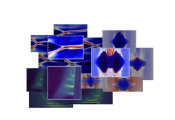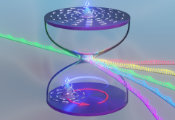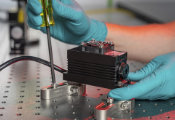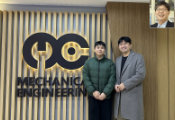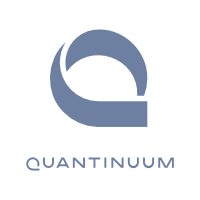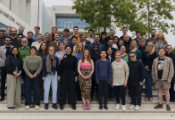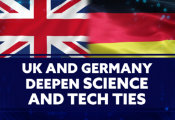Planqc Brings Quantum Computing to Aviation on Behalf of DLR QCI – With TUM, ENGYS and Airbus
September 23, 2025 -- How can quantum computers improve aircraft development and make aviation more sustainable? That is the question quantum technology company planqc, together with the Technical University of Munich (TUM), software provider ENGYS, and aerospace company Airbus, aims to answer. The project is carried out on behalf of the German Aerospace Center’s Quantum Computing Initiative (DLR QCI).
Working closely with DLR scientists, the partners are exploring the industrial use of quantum technologies through two complementary DLR QCI projects: NeMoQC (Neuromorphic Quantum Computing) and ToQuaFlics (Towards Quantum Fluid Dynamics). As the lead contractor, planqc is responsible for implementation, while TUM – represented by the Chair of Aerodynamics and Fluid Mechanics and the Munich Institute of Integrated Materials and Process Engineering – ENGYS, and Airbus contribute as subcontractors.
The approach: using quantum and quantum-inspired algorithms to simulate complex physical flow and structural processes significantly faster and more accurately than with classical methods. This opens new opportunities in aerodynamic design and optimization of future aircraft concepts. Quantum computing thus contributes not only to greater sustainability and comfort in aviation, but also to a competitive edge in global markets.
Quantum-based prediction and flow simulation for aviation
NeMoQC, led by the DLR Institute for AI Safety, focuses on highly demanding aeroelastic problems – the interaction between airflow and aircraft structures, such as wings. Predicting these effects today requires extensive computing and testing, which will increase with aircraft complexity.
This is where NeMoQC comes in: novel quantum methods will be used to simulate aeroelastic effects across a vast number of flight scenarios with greater precision. For aviation, this means fewer physical tests on real aircraft configurations or in wind tunnels, more digital validation, and faster design decisions. Especially in early development phases, teams will be able to better assess geometries and structural properties.
ToQuaFlics, led by the DLR Institute of Aerodynamics and Flow Technology, takes a different but equally relevant approach: instead of aeroelasticity, it focuses on calculating complex flow conditions – for example, how air behaves in detail around fuselages, wings, or engines at various speeds. These simulations are crucial for aircraft aerodynamics but are extremely time- and compute-intensive, particularly when high accuracy is required.
ToQuaFlics is therefore developing quantum algorithms with the potential to dramatically accelerate such simulations or enable extremely large and accurate ones that are currently unfeasible. As a precursor, the consortium is also working on quantum-inspired tensor network algorithms, which can already deliver quantum advantages on classical hardware. The result: faster optimization loops, fewer model simplifications, and the ability to explore many design variants in a fraction of the time.
Together, NeMoQC and ToQuaFlics are advancing complementary quantum algorithms to tackle two central challenges in aircraft development: reliably predicting structural instabilities under aerodynamic load and realistically simulating aerodynamic flows – key building blocks for future quantum computing applications in aerospace.
The goal: quantum computing for real-world development processes
planqc, a leading quantum technology company engaged in numerous industry-oriented projects, contributes to both DLR initiatives by developing quantum algorithms and testing them on its own neutral-atom hardware in realistic applications.
TUM contributes its scientific expertise in developing advanced numerical methods for flow simulation to both projects. It also provides test cases and reference simulations to evaluate the new algorithms under realistic conditions.
“Quantum computing allows us to enter the post-Moore era of computational fluid dynamics and to simulate and analyze complex flow phenomena in entirely new ways,” explains Prof. Nikolaus Adams of the Technical University of Munich.
To ensure these quantum-based methods can make their way into industrial applications, ENGYS handles integration into existing simulation and development tools. As a specialist in CFD software development, ENGYS bridges the gap between classical and quantum-assisted modeling.
“Our goal is to seamlessly transfer quantum-inspired approaches into real-world simulation workflows – enabling us and our customers to overcome the limitations of classical CFD methods,” adds Eugene de Villiers, CEO of ENGYS.
European technological leadership with industrial relevance
Research, industry, and strategic direction: this triad is essential if Europe is to succeed in the global race for quantum computing technologies. The DLR QCI projects NeMoQC and ToQuaFlics demonstrate how this can be achieved: when TUM teams, industrial partners like Airbus, and deep-tech companies such as planqc and ENGYS collaborate with research institutions like DLR on concrete application challenges, the results are not only technologically ambitious solutions but also a model for combining European technological sovereignty with industrial relevance.
This is particularly crucial for key sectors like aviation, where innovation pressure, high computational demands, and ambitious sustainability goals converge.





